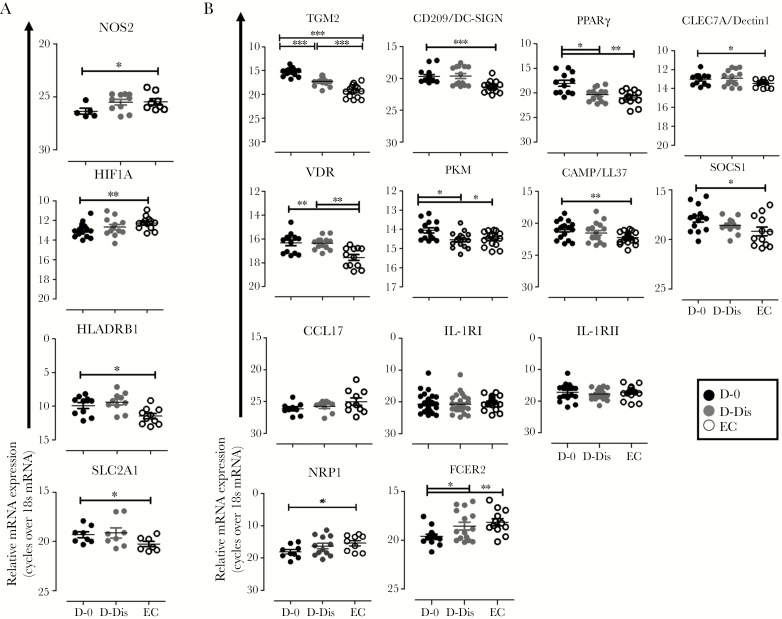Figure 3.
Expression of messenger RNA (mRNA) associated with inflammatory and antiinflammatory phenotype of blood monocytes in patients with visceral leishmaniasis (VL) and healthy endemic controls (ECs). A and B, Representative vertical scatterplots show the differential expression of inflammatory (A) and antiinflammatory (B) gene transcripts in peripheral blood specimens collected from subjects with VL before treatment (D-0; solid black dots) and after 28 days of treatment and prior to discharge (D-Dis; gray black dots; 17 pairs) and from 15 ECs (clear black dots). Specimens were assessed by real-time polymerase chain reaction analysis. Data are mean gene expression ± standard errors of the mean over 18S ribosomal RNA and are representative of 3 independent experiments performed for each gene. Overall, we evaluated 34 mRNA pairs from the VL group and 30 from the EC group. *P < .05, **P < .01, and ***P < .001. CAMP, cathelicidin antimicrobial peptide; CCL17, chemokine ligand 17; CLEC7A, C-type lectin domain family 7 member A; DC-SIGN, dendritic cell–specific intercellular adhesion molecule-3-grabbing nonintegrin; FCER2, Fc fragment of immunoglobulin E receptor II; HIF1A, hypoxia-inducible factor 1-alpha; HLA-DRB1, major histocompatibility complex class II DR β1; IL1R1, interleukin 1 receptor type 1; IL1R2, interleukin 1 receptor type 2; NRP-1, neuropilin 1 precursor; NOS2, nitric oxide synthase 2; PKM, pyruvate kinase M; PPARγ, peroxisome proliferator-activated receptor γ; SLC2A1, solute carrier family 2, member 1; SOCS1, suppressor of cytokine signaling 1; TGM2, transglutaminase 2; VDR, vitamin D receptor.

